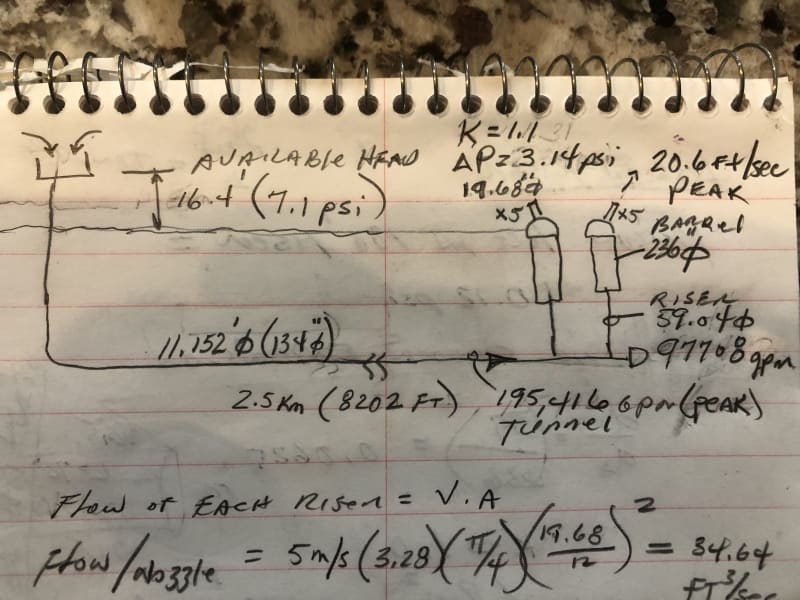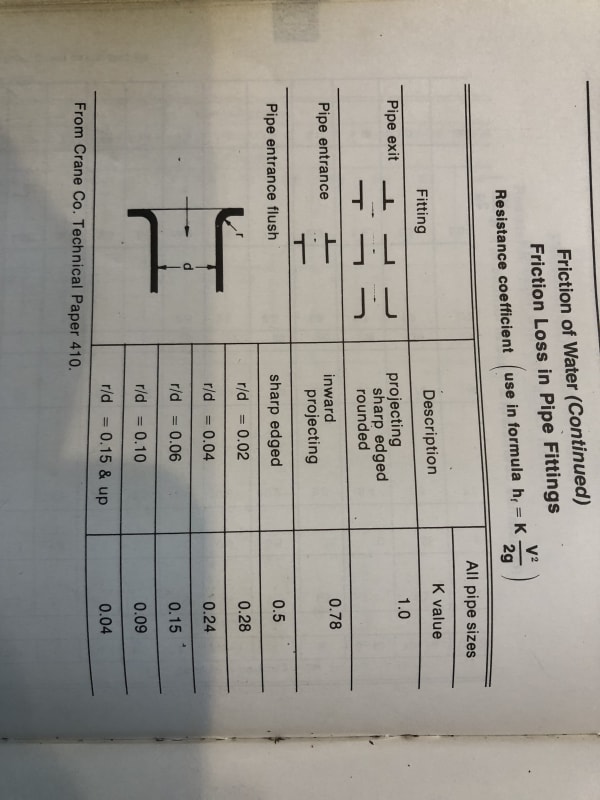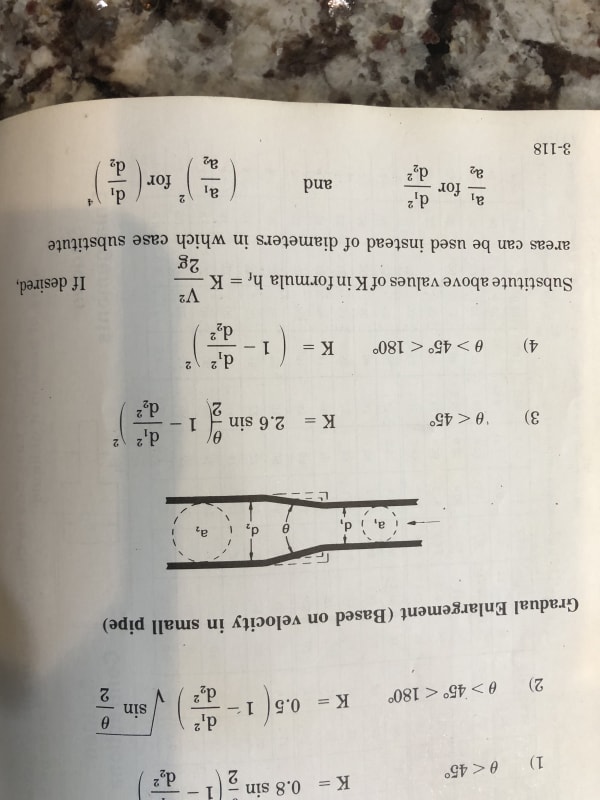Hi all.
We operate an undersea outfall that has a 1.5m diameter riser pipe discharging by gravity vertically into a 6.0m diameter barrel with a diffuser cap on top, discharging to the ocean.
The outfall capacity needs to be doubled and I have suggested installing bellmouths on top of the risers inside the barrels will reduce the headloss and hence allow more flow at any particular upstream water level.
My thoughts are that gradually slowing the velocity through a bellmouth (say double the riser diameter at the outlet) will significantly reduce the headloss compared to an open exit (1.5m from the riser straight into the 6.0m barrel).
Another engineer has suggested bellmouths don't do anything for headloss on outlets - only inlets.
What do others think?
Thanks
AusMike
We operate an undersea outfall that has a 1.5m diameter riser pipe discharging by gravity vertically into a 6.0m diameter barrel with a diffuser cap on top, discharging to the ocean.
The outfall capacity needs to be doubled and I have suggested installing bellmouths on top of the risers inside the barrels will reduce the headloss and hence allow more flow at any particular upstream water level.
My thoughts are that gradually slowing the velocity through a bellmouth (say double the riser diameter at the outlet) will significantly reduce the headloss compared to an open exit (1.5m from the riser straight into the 6.0m barrel).
Another engineer has suggested bellmouths don't do anything for headloss on outlets - only inlets.
What do others think?
Thanks
AusMike



